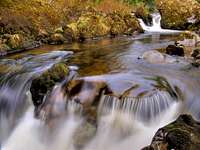Image Type(s): Rock Climbing, Ice Climbing, Alpine Climbing, Bouldering, Aid Climbing, Hiking, Skiing, Wildlife, Flora, Topo/Diagram, Informational, Scenery, Panorama, Water, Canyoneering
-
 3587 Hits
3587 Hits
-
 83.1% Score
83.1% Score
-
 16 Votes
16 Votes
|
|
Album |
|---|---|
|
|
Rock Climbing, Ice Climbing, Alpine Climbing, Bouldering, Aid Climbing, Hiking, Skiing, Wildlife, Flora, Topo/Diagram, Informational, Scenery, Panorama, Water, Canyoneering |
Section-1 What is HDR Image Photography:-
My HDR images:-After learning alot of tricks about my cameras I have finally caught the bug of taking alot of my images in HDR format. This album is of all my recent HDR images that I have taken over the last few months since learning these new settings.
HDR photography is image processing, computer graphics, and photography, high dynamic range imaging (HDRI or just HDR) is a set of techniques that allow a greater dynamic range of luminances between the lightest and darkest areas of an image than standard digital imaging techniques or photographic methods. This wider dynamic range allows HDR images to represent more accurately the wide range of intensity levels found in real scenes ranging from direct sunlight to faint starlight.
The two main sources of HDR imagery are computer renderings and merging of multiple photographs, which in turn are known as low dynamic range (LDR) or standard dynamic range (SDR) images. Tone mapping techniques, which reduce overall contrast to facilitate display of HDR images on devices with lower dynamic range, can be applied to produce images with preserved or exaggerated local contrast for artistic effect.
Information source from:-
Wikepedia
How I do it:-
The method I use is either the setting commonly known as bracket or BKT on most cameras which takes three seperate images each at a different exposure level. I normally call this method automatic BKT and it is best used for fast shutter landscape photographs. The other method I use is what I call manual BKT. With this method I take five seperate images across the exposure settings. These are normally taken at -2, -1, 0, +1 and +2. I then use these five images to create the HDR image. Manual BKT is best used where there is no sky in the picture as the various software packages can struggle to overlap the moving clouds. One moving object that both automatic and manual BKT does not seem to have a problem with is water...? When doing any form of BKT photography it is heavily advised that you use a good steady tripod with a wireless or cable remote control so as to create as little movement as possible.
Another method of getting a single image to a HDR format in relatively good quality is to open the original up in Photoshop. Reduce and increase the light in the image saving each one as a seperate file. Then using the original and the two edited shots embed them into each other using the software. This does if lucky come out with some good results but believe me is mainly trial and error...?
Some HDR images I have seen on various web sites are well over the top and in most cases look very unreal. The ones I have taken are suttle and well balanced without them going to these extremes. Enjoy looking at them...!
There are various software packages that can be used to create the HDR image. The most common ones are Photoshop and Photomatix Pro.
Section-2 External Links:-
If you want to find out more about how BKT settings work refer to your camera manual or hand book and see if this function is available.For more information look up BKT and HDR photography on a web search engine such as Google in the link below.
Google search HDR photography page
Google search HDR Photoshop page
Google search HDR Photomatix page




